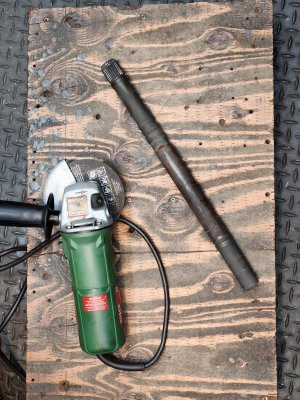The other day, while walking the dog on the morning of garbage day, someone had put out a half-shaft for collection.
Well, me, being of sound mind, I collected it. Now, I think, those parts are usually made of heat treated 4140, 4340. I removed the one end, and cut off the other. 28mm in diameter at the thickest part, and a little over an inch at the thinnest; 16" in length. A file will bite, but wants to skate, so I would guess maybe around 40-45Rc.
Well, me, being of sound mind, I collected it. Now, I think, those parts are usually made of heat treated 4140, 4340. I removed the one end, and cut off the other. 28mm in diameter at the thickest part, and a little over an inch at the thinnest; 16" in length. A file will bite, but wants to skate, so I would guess maybe around 40-45Rc.


